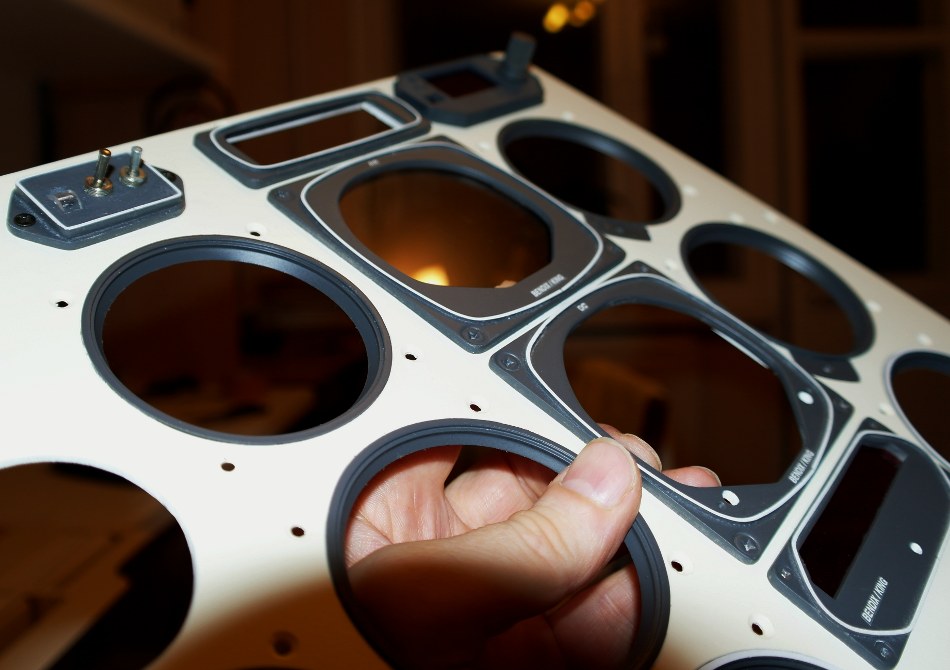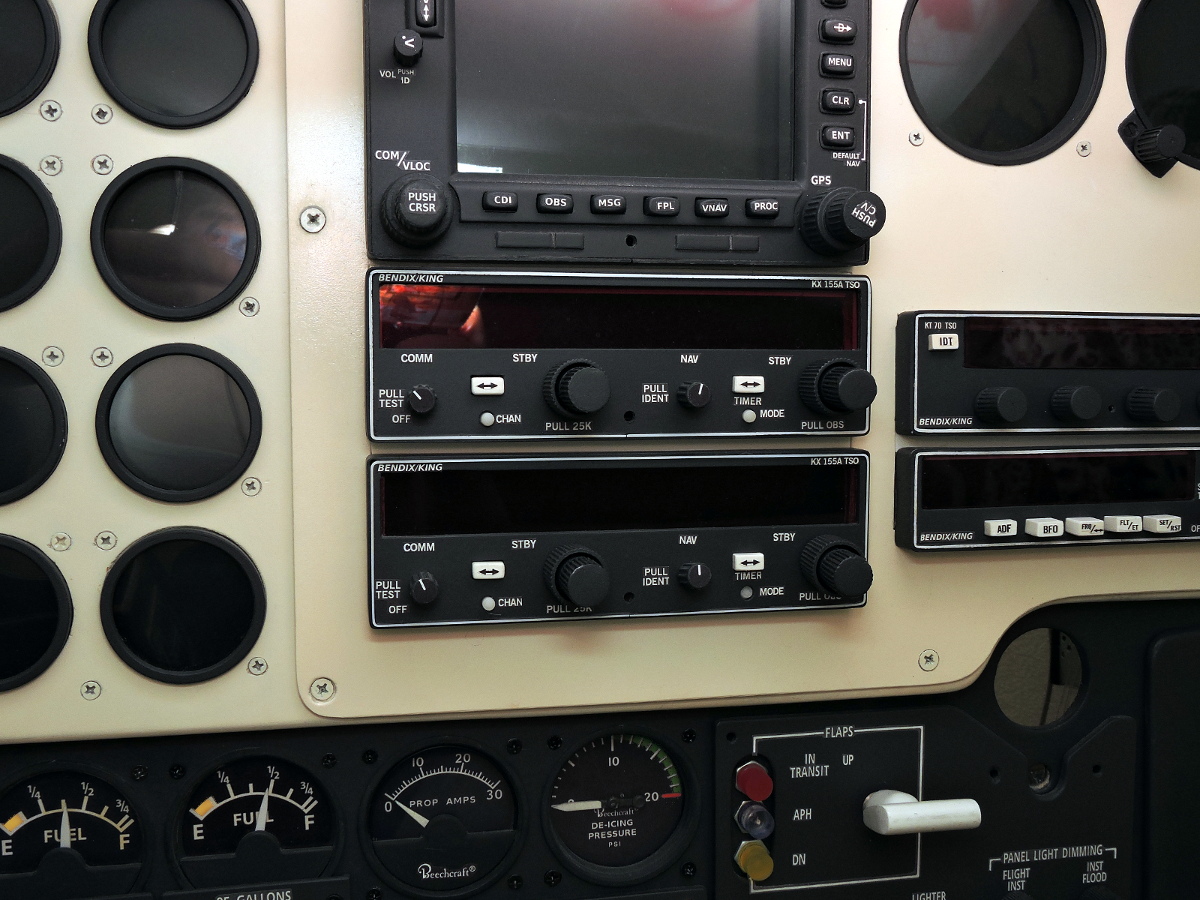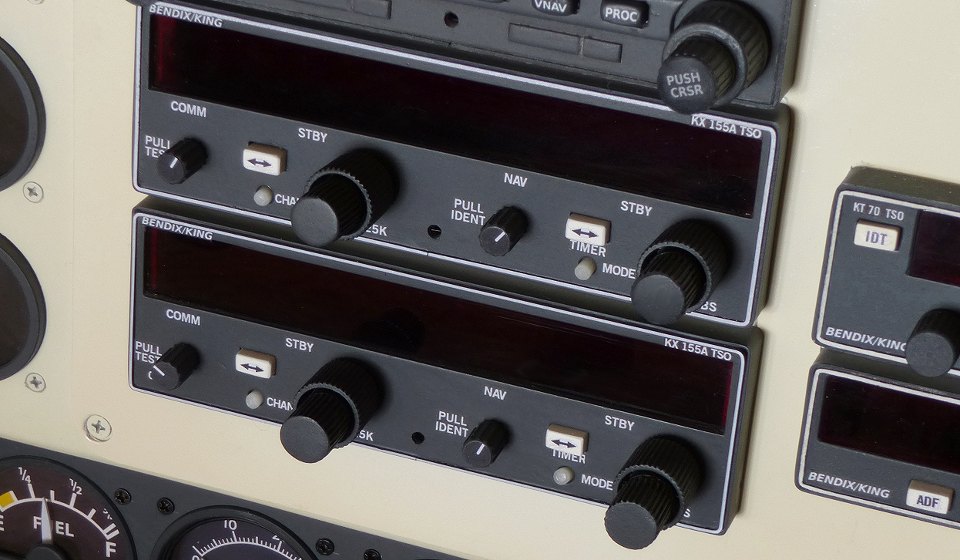



There are many flight simulator cockpit parts and devices on the market today, from the cheapest to the most expensive, and beginner cockpit builder can simply start by buying various expensive parts. On the other hand, knowing how everything works and being able to do it yourself in simple ways gives more pleasure from creativity and saves a lot of money.
Dedicated hobbyists always prefer to make everything with their own hands, rather than buy ready-made panels and kits. And their homemade cockpit parts definitely can look no worse (even better) than a store-bought one. An you too can create very cheap, but very realistic panels by hand in a few hours.
You do not need to buy something special, all you need is regular switches, buttons, LEDs, indicator modules and one controller board (Mega2560), some plastic (PVC), wood, cardboard and your hands. For a home cockpit, you don't have to use metal or expensive materials to get a panel that looks "real". Even a cardboard panel can look very real, with the right dimensions and controls.
As a practical DIY example, you can see my full-size Baron 58 wood/PVC/plastic panel, which took me about 100 labor hours to make (plus time for the pedestal) and cost about $50 for all materials (most of it free), plus electronics componens. I used plywood, PVC, other materials at hand, two LCD panels from old monitors. Making a simple PVC bezel (DME for example) takes less than an hour.




There are plenty of good, useful, inexpensive cockpit parts, instruments and convenient DIY kits you can find on the sim market, as well as tutorials, 3D printed parts, free 3D models, etc.
On the other hand, some simple plastic "box" or bezel with a few cheap generic components may be very expensive and appear as a very complex device to novice cockpit builders due to the lack of information that would allow them to easily make the same "complex" devices themselves. Buying such devices may save you a little time and provide some "visual realism", but is it really worth it?
No, I think it's definitely not worth paying even $200 (let alone $500-$1000) for an "authentic looking" unit that only has a few encoders, buttons, 7-segment displays and even an LCD screen (like the GPS or G1000), and nothing more inside that makes it unique and that you can't make yourself. Everyone can take a piece of plastic, add a few buttons and use it as a mask on that external screen.
I'm not going to convince home cockpit builders not to buy overpriced hardware, everyone is free to spend their money as they want. Just remember, you're building a home cockpit simulator, not a real airplane. Why, for example, buy a simple radio unit or servo/stepper motor gauge for $200 when you can literally spend couple of hours and just about $10 to make one yourself (for example the DME unit or stepper gauge)?
If you still think that you can not build some module yourself - keep an eye on the prices, at least you can find very good alternatives, kits, for example, a complete Boeing737 panels kit (cover plates) for 150-200 dollars and gauges with servos for 20-40 dollars. At the very least, you should know about alternatives to buying expensive hardware.
VladVarious manuals and examples may be posted on this site as they are ready or are received from fellow cockpit builders.
Realistic - it's a very stretchable notion. If X-Plane itself (or some instrument program as SimVimPanel) provides all functionality for some instrument as in real life (G1000, for example), then the only thing that can make feel it more "real" - is using few cheap buttons placed on some cardboard/plastic "panel" or a simple instrument mask. Why would you need to pay $$$ for what you can do easily at no cost.
In any case, you will always know that you are in your home, not in a real plane, and it absolutely doesn't matter if you have those buttons on a molded ABS panel for $3000, on the painted "all-metal" panel, or it is just your self-made painted PVC/plexiglass panel that can have a very real appearance for $10. :))
All these words should assure you that it's a real device, in visual appearance and materials - "realistic" surface texture, exact colors, shape and color of screws, ... (Does this include smell, "weathering", scratches?)
First, why anyone would make it "non-full-scale"? "Replica" means "an exact copy," but the actual product may not always be as exact. Anyway, you define it for yourself - for what level of "exactness" you are ready to pay extra money - for exact color, shape, size, controls or functionality of this device (but do not confuse it with the functionality of the program and simulator that it uses!).
What is this? In short - it is a small piece of composite plastic to which the electronic components are attached without wires. You can learn more about this technique on the Internet, for example on Sparkfun website.
Price: Today everyone (and you too!) can order any PCB online, in any quantity. Even for the most "complex" PCB that could be used in such modules, this price can be $0.2 if a hundred pieces are ordered, or $1-5 if only one PCB is ordered.
Ah, and any such PCB is "custom-made" - this doesn't mean it's special in any way. Actually, for a simple device, which only includes several buttons/encoders this PCB is a joke - you can have it or not, it can just as easily be a few inches of wires connecting the buttons to the socket.
"High-resolution"? It just means that this LCD screen has it's usual, typical resolution for its size, nothing more. There can be some difference for small screens, but you can barely see any difference in picture between 120ppi and 96ppi screen (ppi = pixels per inch).
And, how about this?: the real GNS530 has display with horizontal resolution of 320 pixels (or 79 ppi of resolution)! But typical resolution for LCD screen of this size that you can find on market now is usually 480 ... 800 pixels!. In fact, it can be said that a high-resolution screen actually makes such device less realistic, ha-ha.
What is that "high quality" exactly? Look at AliExpress, Ebay or other marketpaces where you can buy the encoders for $0.5 - 1 for piece and all they are "high quality", and I can confirm that, because I have a lot of them (these small encoders can be used in thin cover panels). I'm not even talking about LEDs, switches, or buttons - they're just the cheapest mass-produced components.
Note: expensive "high quality" encoder does not mean that it works better! This can be even the opposite. Any cheapest encoder of any type works perfectly with SimVimX!
If those "alternatives" are expensive and priced non-adequately, it absolutely doesn't mean that this "cheaper" device has a really reasonable price and is worth your money. Just get more information about it's internal structure and how it works.
For example, all the G1000 modules on market are simple input/output device with few buttons, that use X-Plane functionality or some external program to display data. See this information.
Of course, sellers can make their products in their home country, but do not flatter yourself thinking that all the "high quality" components used in any of these devices are "made in USA" - you can be sure that most of them are purchased (or at least produced) in China. And this fact doesn't mean "low quality" components now, as it maybe used to be 30 years ago.
Finally, a website with expensive product that has fancy "advertismenting" design and pictures quality may attract you at first glance.
On the other hand, many websites with modest design, with no self-praise slogans, no pseudo-technical excessive information, may contain a good and cheap products (but not necessarily)